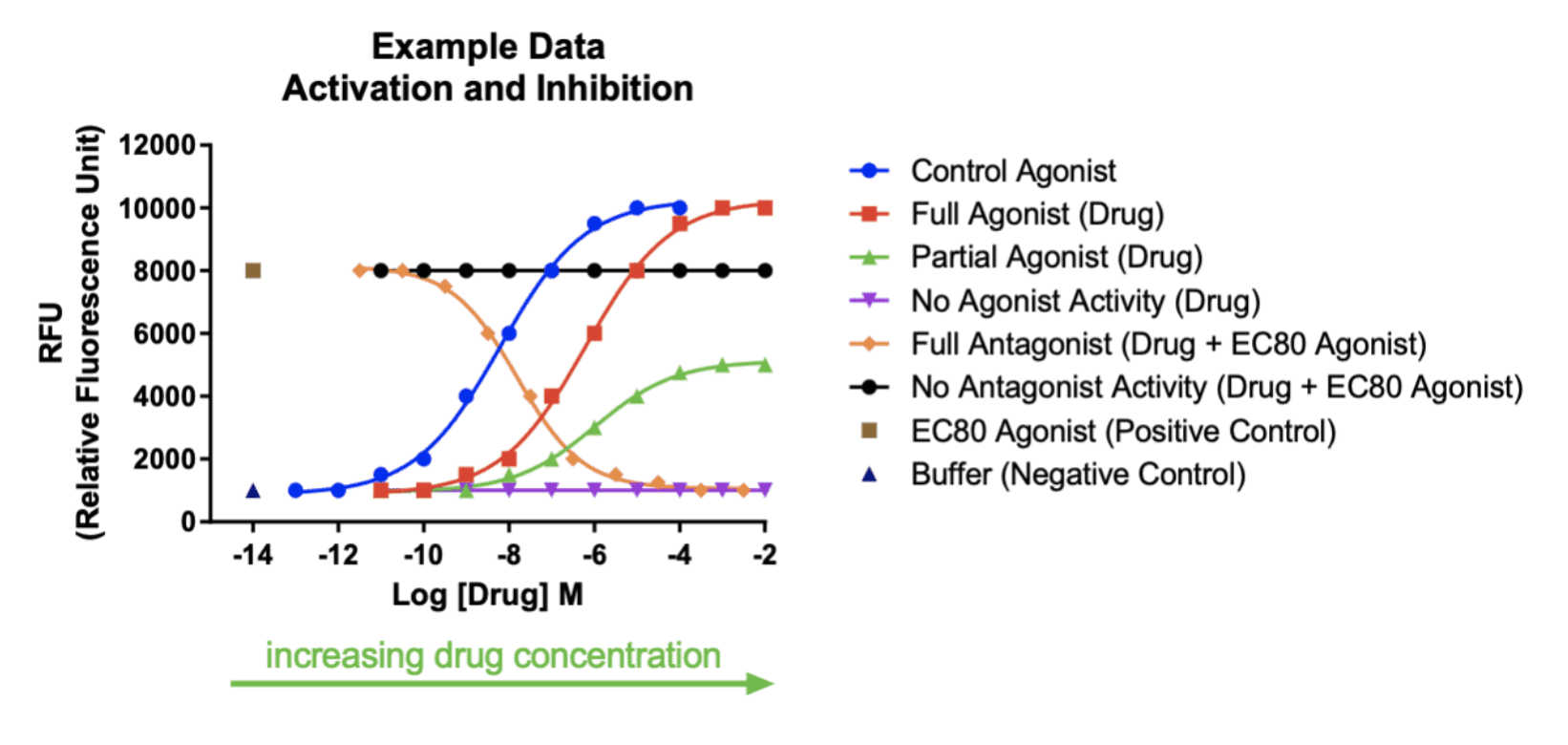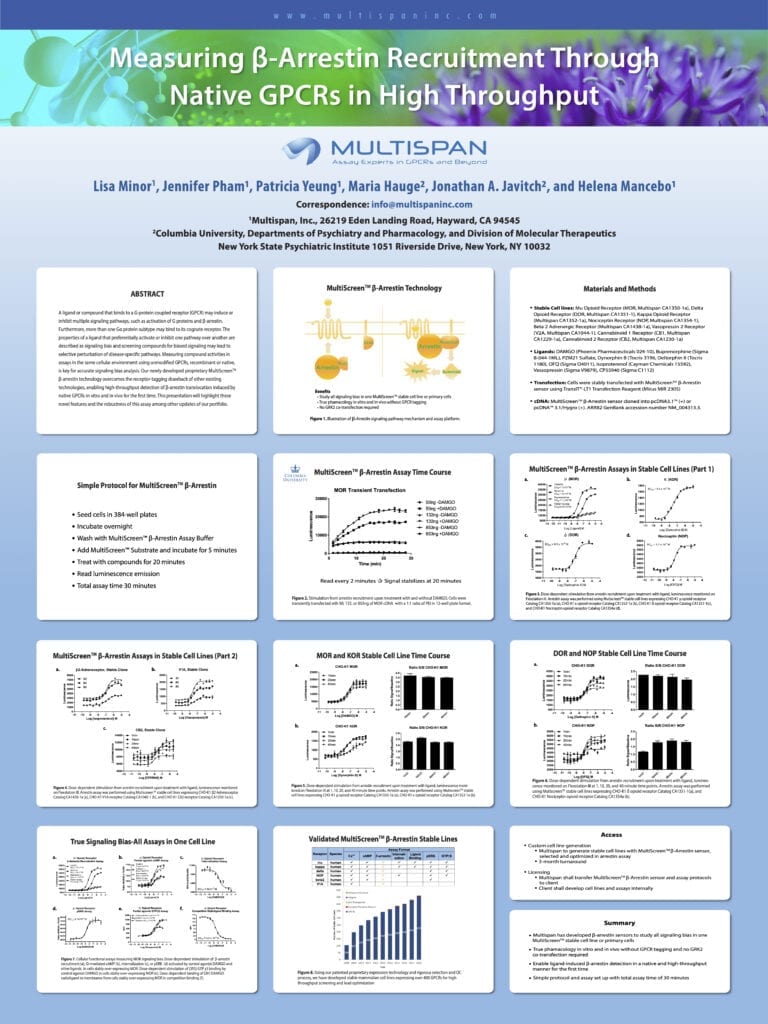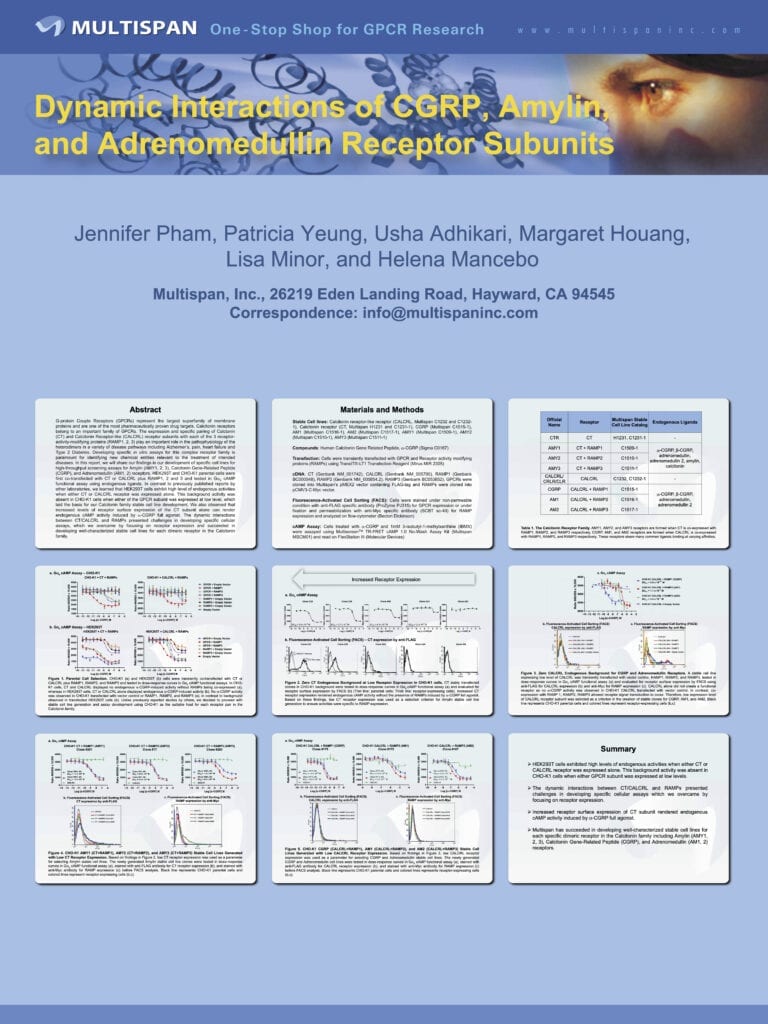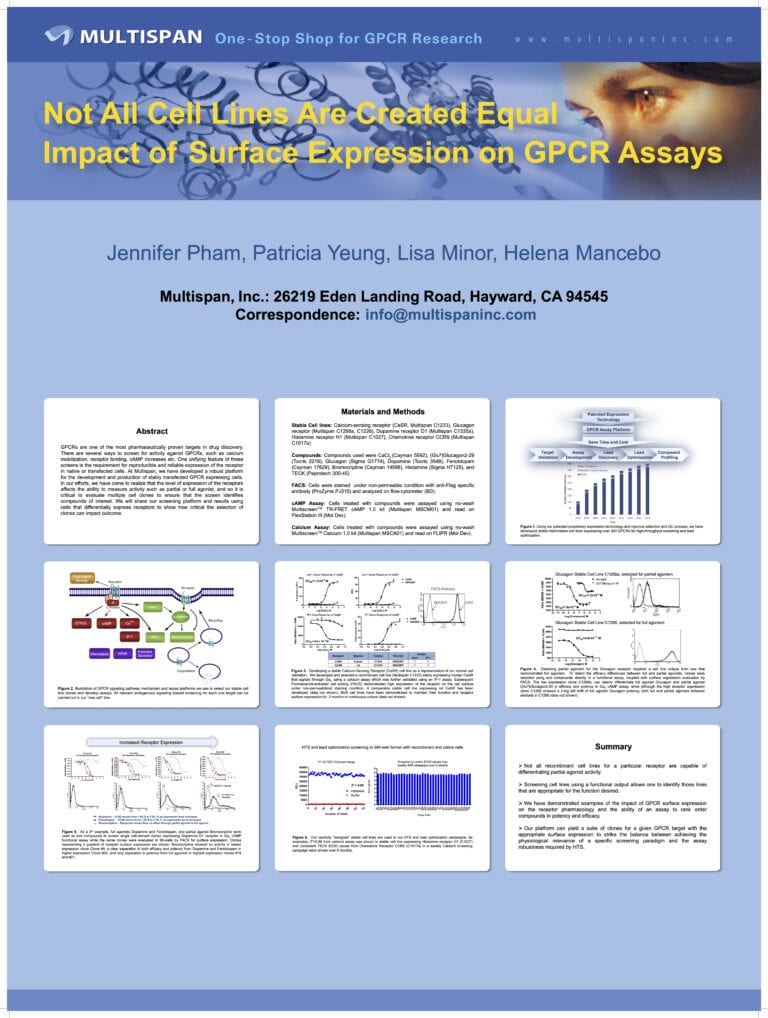Learning Is Power
Most Recent
FAQs
How Should I Store Multiscreen™ Stable Cell Lines, Division-Arrested Cells and Membranes?
- Upon receiving the package, the vials should be immediately transferred from the dry ice shipping container to a liquid nitrogen storage tank. Please note that storing the cells or membranes at -80°C can cause irreversible damage to them.
- For stable cell lines, we recommend banking at least 10-20 vials from one vial you receive from us immediately before any experiments. This will serve as your master working lot at the lowest passage.
What Is the Shelf Life of Multiscreen™ Cell Lines and Membranes?
Cell lines and membranes are viable indefinitely if handled and stored properly in liquid nitrogen.
What Are the Correct Temperature and CO2 Settings for Tissue Culture Incubators?
37°C and 5% CO2
What Are the Correct Temperature and CO2 Settings for Tissue Culture Incubators?
37°C and 5% CO2
Is It Necessary to Remove the Freezing Medium Before Putting the Cells Into Culture?
We always recommend removing the freezing medium prior to initiating the culture. Thaw and culture the cells as instructed in our cell line protocol.
How Often Should I Change the Media?
After thawing and plating the cells, the first medium change should be done after the cells attach to the plate or flask overnight. The medium should be changed every 48-72 hours until the cells are ready to be passaged or used in an assay.
How Many Passages Can I Obtain With the Stable Cell Line From Multispan?
Because different researchers use different split ratios, it is difficult to predict how many passages can be obtained with a particular cell line. Our stable cell lines are guaranteed to be stable for 2 months in continuous culture which is approximately 25-30 passages.
Can I Culture Multiscreen™ Division-Arrested Cells?
NO. Division-arrested cells should not be cultured in any way. The cells should be thawed and plated immediately in assay plates for adherent or suspended cell assays.
Are There Any Special Assay Plates and Coating Materials That I Need to Use for Seeding Multiscreen™ Cell Lines for an Assay?
For adherent cell assays, Poly-D-Lysine coated plates are recommended to improve cell adherence.
Can I Use a Different Fetal Bovine Serum (FBS) Than What Is Recommended on the Protocol?
A different FBS source may be used as long as it matches what we recommend. Cell growth and performance may be adversely affected otherwise.
Can I Use a Different Cell Culture Medium Source Than What Is Recommended on the Protocol?
A different cell culture medium source may be used as long as it contains the exact same components and formulation. Cell growth and performance may be adversely affected otherwise.
Can I Add Penicillin-Streptomycin to the Cell Culture Medium?
For laboratories where Penicillin-Streptomycin (pen strep) is routinely applied in cell culture, adding pen strep in cell culture is strongly advised. However, Multispan does not use Penicillin-Streptomycin in our laboratory to allow any contamination to manifest and be discarded early. We take extra measures to maintain our laboratory and cell lines clean and this is a way to monitor that.
How Many Wells Are Used per Concentration (Repetition) in Multispan’s Assays?
Depending on the customer’s preference, assays may be performed in duplicates or triplicates.
How Many Concentration Points Are Tested for Dose Response Curve Testing in Multispan’s Assays?
Minimum of 10 points to calculate accurate EC50/IC50.
What Concentration Range Should I Use to Test My Compounds?
If you know the expected EC50 of your compounds, we recommend testing 5 points higher and 5 points lower than EC50. If your EC50 is unknown, we recommend testing at 10uM top concentration with 5-fold serial dilutions to cover a long-range.
How Do I Interpret Multispan’s Screening Data?
Here is an example of positive and negative data with the treatment of drugs in our calcium assays including full agonist and partial agonist activity when compounds are tested alone, and antagonist activities when compounds are tested in the presence of natural agonist at its EC80 concentration.
Protocols
MultiScreen™ TR-FRET cAMP 1.0 No Wash Assay Kit
MultiScreen™ Calcium 1.0 No Wash Assay Kit
Tips for Establishing Successful Cell-Based Assays: Part 1
Tips for Establishing Successful Cell-Based Assays: Part 2
Tips for Establishing Successful Cell-Based Assays: Part 3
Strategies and Tools to Develop a Better GPCR Targeted Therapeutic
Updates
Recent Updates





